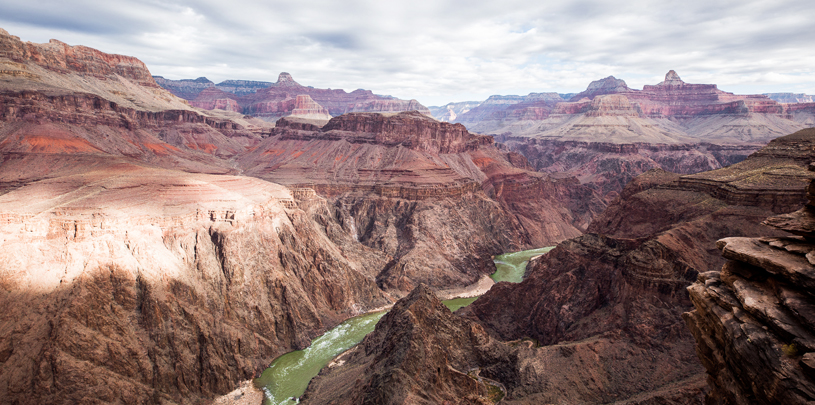
by Amber Reimondo, Energy Director
It's been nearly a year since Energy Fuels Resources, the company that owns a hotly contested uranium mine near the Grand Canyon, officially changed that mine's name, from the revealing "Canyon Mine" to the innocuous-sounding "Pinyon Plain Mine" in an apparent attempt to distance the mine from its namesake. But as Arizona regulators continue to weigh whether to grant the mine a key groundwater permit it needs, concerns remain that contamination from the mine could threaten precious water sources and the surrounding environment mere miles from Grand Canyon National Park.
No one is more concerned about contamination at Canyon Mine than the Havasupai Tribe, which has opposed Canyon Mine since the mine broke ground in the 1980s. The mine sits in a forested meadow in the Kaibab National Forest, near the tribe's sacred mountain, Red Butte, on the Havasupai Tribe's ancestral lands. As legal challenges to the mine continue, risks to the Havasupai Tribe and the Grand Canyon's precious waters loom large.

Canyon uranium mine hit water while drilling its mine shaft, and over 40 million gallons of water laden with uranium and arsenic have been pumped out of the mine to date. Much of that water has been pumped into an uncovered evaporation pond frequented by birds and other wildlife, or misted into the air to speed up evaporation. The Havasupai Tribe worries contaminated water from the mine could eventually reach groundwater-fed Havasu Creek, which flows through their remote village at the bottom of a side canyon off the Grand Canyon, providing drinking water for people and their livestock.
"One of the arguments I recall was that, 'Oh, you won't see the contamination until hundreds of years from now,'" Havasupai Tribal Council member Carletta Tilousi told the Arizona Republic this summer. "We're not willing to take that risk. There's only 757 of us left, and we just can't risk that right now for the future of our children."
"Our traditional use land is being contaminated and the R-Aquifer, which feeds Havasu Creek and provides life to our people in the canyon is at risk," Matthew Putesoy, Sr., vice chairman of the Havasupai Tribe, told a local radio station. "Why take that risk? Once the R-Aquifer is contaminated, Havasu Creek is contaminated and our life in the canyon will then be contaminated."
The tribe hopes to see the mine closed.
"This Mine does more than threaten our only water supply. It has already affected the daily lives of the Havasupai people," Vice-chairman Putesoy wrote in a letter to Arizona regulators urging them to deny the so-called "aquifer protection permit" application the mine owner submitted earlier this year.
"The Mine rests within the Tribe's Traditional Cultural Property designation of Red Butte,” Putesoy explained. “...Red Butte...is an origin point in the Havasupai creation story and a traditional gathering place for the Havasupai to conduct ceremonies and gather medicinal plants. The meadow where the Mine site is located is sacred and spiritually tied to Red Butte….our Tribal members have been forced to stop visiting this Traditional Cultural Property and have stopped harvesting plants, including the medicinal plants of cedar and sage, near the Mine site.”
The Grand Canyon Trust continues to support the Havasupai Tribe's efforts to protect their homeland from Canyon Mine. In August, the Trust argued a second appeal before the U.S. Court of Appeals for the 9th Circuit in a long-running lawsuit involving Canyon Mine.

Act now. Urge your senators to support, co-sponsor, and push for a committee hearing for S. 387, the Grand Canyon Protection Act, to permanently ban new uranium mines on public lands around the Grand Canyon.
80% of Arizona voters support Baaj Nwaavjo I'tah Kukveni National Monument, according to a new poll.
Read MoreThe Colorado River below Glen Canyon Dam is heating up. Find out why.
Read MoreGroundwater pumping at a uranium mine near the Grand Canyon will affect the canyon's springs, scientists says.
Read More